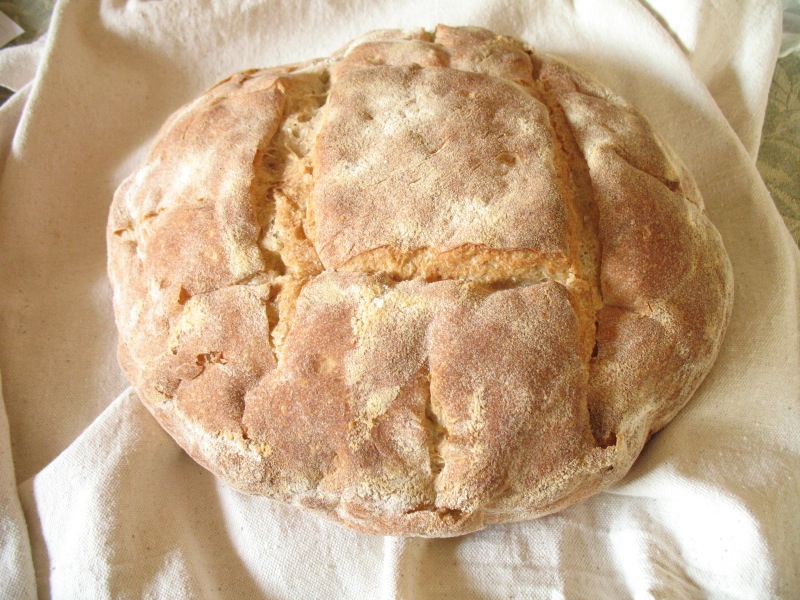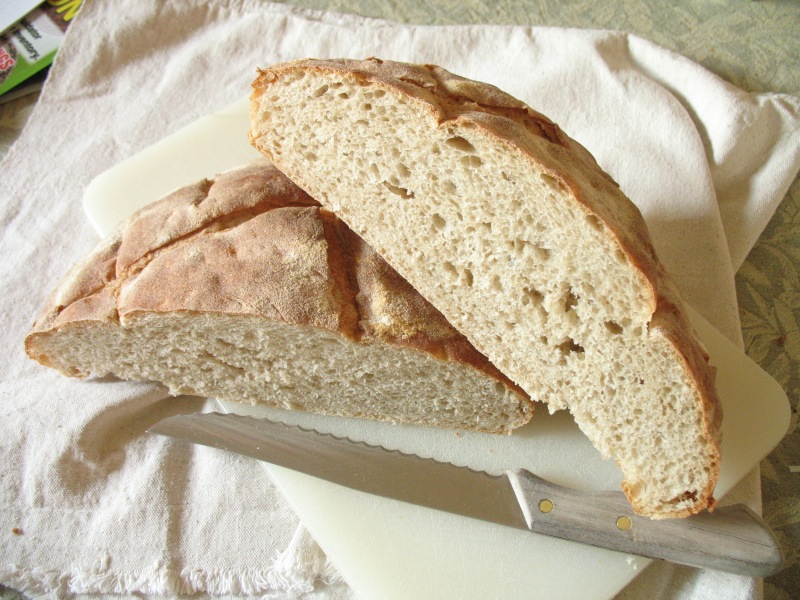(From the blog)
It's been a short while since I've updated the blog so here's the latest which was actually made last weekend, June 14th.
This time around, I went with a round bread to see how that would work. Since I still don't have a banneton, I made do with a rice-flour coated, couche-lined sieve. By using a sieve, as opposed to just a bowl, I figured it would allow for some air transfer and keep the couche/canvas from getting damp and tacky. It pretty much worked, although it was still a bit tacky and pulled the dough ball a little when I transfered it to the baking sheet. I did not use the tiles this time, just to see how it would turn out and also to help conserve a certain amount of energy heating them for 45 minutes ahead of time (besides, it was already a pretty hot day, no sense heating up the kitchen even more). 
The worry here was that the ball of dough would collapse and turn into a giant disk and not a proper "boule" or ball. Well, it did a bit of both. The soft dough rather spread out once it was on the baking sheet but perked up a bit and rose up during the initial time in the oven. Yes, I'm still guessing what the oven temp actually is, have not yet found a reasonably priced decent oven thermometer.
So again spending the entire time watching the progress and giving the bread a spin halfway through the cooking time, here's the result. (Click pics to enlarge.)


So, let's critique.
The crust this time is thinner which meets with Mark's approval. As per the 'quick" version of the recipe, the dough proofed for only 2.5 hrs so it's not very sour - not necessarily a bad thing. The slashing, well... that definitely needs work still. After I made the first cut, the dough ball rather lost it's firmness and spread out a fair bit so I was a little reluctant to slash too heavily for the other three cuts. The crust looks rather lumpy/crater-ish and not very tight and smooth. I don't know what causes that or how to remedy it. Yet. It could likely have stood a slightly longer baking time to get a bit less... anemic looking.
The crumb is light, not chewy, again this has received good reviews from the white sliced bread fan. In fact I have to admit that there was another loaf, a batard, that never got a chance to get photographed as it vanished pretty darn fast. That one got a brushing with butter as soon as it came out of the oven so the crust there was even more like packaged bread. It was tasty but the butter did not all soak in, so the loaf was a little oily to handle. Since it vanished in about a day, I guess it wasn't a big issue. ;)
So again, we have a successful bake (i.e. nothing burned or flattened like a pancake) with a few minor adjustments to look into:
1) How to keep the boule from flattening too much both before and with the slashing
2) What's the deal with the lumpy crust and why isn't it a nice, tight outside?
3) Considering both points #1 and #2, would a tighter crust translate into a chewier crust? Hmmm..
More rounds to go before these issues are settled.